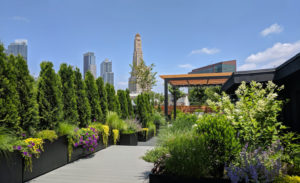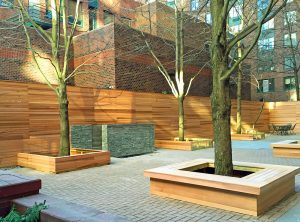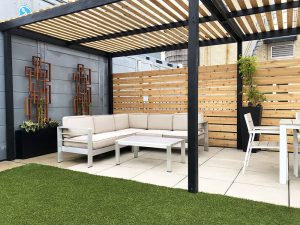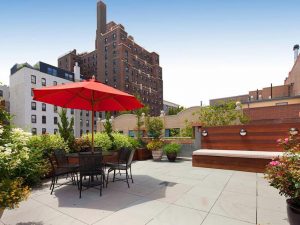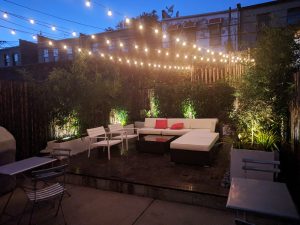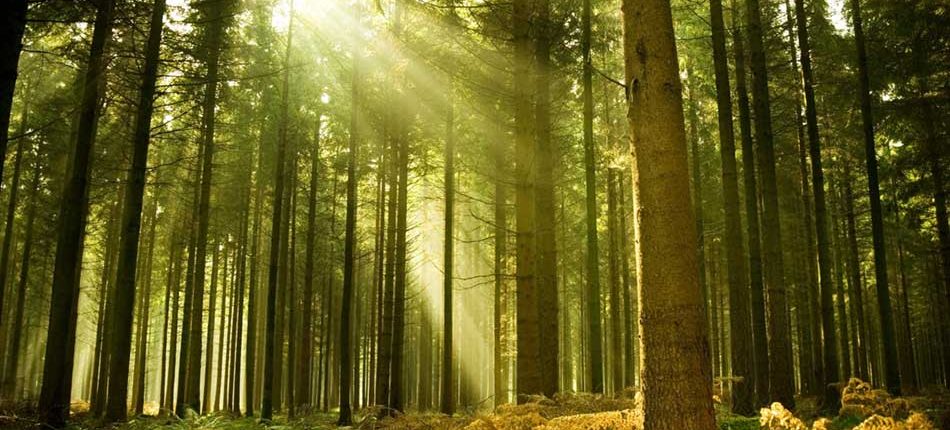
We have, in a lot of ways, become an indoor species. The invention of agriculture 10,000 years ago tied many of us to one place. Modern agricultural practices in the 18th century, paired with the industrial revolution in the mid -1700s, allowed for the creation of cities and modern living. And now we see that more than ever, especially in western cultures. A survey done in 2001 sponsored by the U.S. Environmental Protection Agency found that, on average, Americans spend 87 percent of their time indoors, and an additional 6 percent in an enclosed vehicle. But, the importance of nature has lived in our bones since our earliest civilizations. Hippocrates referred to this as the vis medicatrix naturae, or healing power of nature. Buddist and Shinto practices of meditation emphasize the benefit of spending time in nature. In the mid to late 1800s, physicians Peter Detweiler and Hermann Brehmer set up sanatoriums in Germany’s pine forests, as did Edward Trudeau in the Adirondack forests of New York and all reported the benefit of the forest air on curing tuberculosis. Medical doctors, including Franklin B. Hough, reported in early U.S. medical journals that forests have a “cheerful and tranquilizing influence, which they exert upon the mind, more especially when worn down by mental labor.” We all know this intuitively.
Which brings us to forest bathing. The concept of forest bathing became part of a national public health program in Japan in 1982, when the forestry ministry coined the phrase shinrin-yoku. In Japanese shinrin means forest, and yoku refers here to a “bathing, showering or basking in.” So the phrase here is generally defined as “taking in, in all of our senses, the forest atmosphere.” The program was established to encourage people to go into nature, to literally bathe the mind and body in green space, and utilize publicly owned forests to promoting healthy living. Nature appreciation is very popular in Japan, think ‘picnicking under the cherry blossoms’. Almost 64 percent of Japan is occupied by forest, so while there are megacities, there is plenty of forest to escape to. All of this helps make Japan the perfect environment for shinrin-yokuto take hold.
It began as a marketing term when Mr. Tomohide Akiyama, director of the Japanese Forestry Agency, proposed that spending time in nature would be beneficial to the mind and body in 1982. This idea was then backed in 1990 by Dr. Yoshifumi Miyazaki of Chiba University, when he was trailed by film crew from the Japanese Broadcasting Corporation as he conducted a small study in the forests of Yakushima comparing 40 minutes of walking in the cedar forests to walking in a laboratory. He showed lower levels of the stress hormone cortisol in subjects after the forest walks. After that initial study, the research team from Chiba University collected data on some 500 adults and a separate group from Kyoto involving another 500 adults, both confirming that spending time within a forest setting can reduce psychological stress, depressive symptoms, and hostility, while at the same time improving sleep and increasing both “vigor and a feeling of liveliness”. From 2004 to 2012, Japanese officials spent about $4 million dollars studying the physiological and psychological effects of forest bathing, designating 48 “therapy trails” based on the results. Qing Li, a professor at Nippon Medical School in Tokyo, measured the activity of human natural killer cells in the immune system, the cells that provide rapid responses to viral-infected cells and respond to tumor formation associated with immune system health and cancer prevention. In his 2009 study, Li’s subjects showed significant increases in natural killer cell activity in the week after a forest visit, and positive effects lasted a month following each weekend in the woods.
Not everyone has access though to dense Japanese forests. About 85% of the US population live in areas designated as ‘suburban’ or ‘urban’, and may not have access to traditional rural forests. But gardens, parks and street trees create pockets of greenspace. Roger S. Ulrich published his findings of a study he did in 1984 in the journal Science, where he collected records from a single suburban Pennsylvania hospital from 1972 to 1981. He compared adults who had gone through identical gallbladder surgeries where the only major distinction was the room the patients were brought to for recovery. One side of the hospital had views of a small forest, the other had views of brick walls. The results were clear and impressive. Those who had an outdoor view to trees had significantly shorter hospital stays, fewer postsurgical complaints, needed weaker pain medication alternatives, and their nurses made fewer negative comments in their charts. The results of this study have been backed by multiple following studies. For example, a recent study of cardio-pulmonary patients published in Clinical Rehabilitation in 2011, showed that patients who had an unobstructed view of nature self-reported ‘higher levels of health’. But this also applies to non-hospital environments as well. Research done in Norway showed that having a plant at or within view of an office workstation significantly decreases the risk of sick leave. A 2010 study from the University of Technology in Sydney, Australia, reported that levels of anger, anxiety, depressive thoughts, and fatigue all reduced by about 40 percent with the introduction of a visible plant in a work space over a three-month period. In 2008, the Journal of the Japanese Society for Horticultural Science published an article showing that high school classrooms with potted plants over a four-month trial period significantly reduced visits to the infirmary compared to similar classrooms with no plants.
Nature just helps. Whether you can see it from your window or are physically with your potted plant, there are scientifically proven benefits to being with nature. The closer you are though to large swaths of green, the better. Recent studies show that when we breathe in the fresh air, we breathe in phytoncides, airborne chemicals that have antibacterial and antifungal qualities which help plants fight off disease and pests. Forest air doesn’t just feel fresher and better—inhaling phytoncide actually improves immune system function. Studies show that children who spend time in natural outdoor environments have a reduction in attention fatigue and children diagnosed with ADHD show a reduction in related symptoms. Nature activates the parasympathetic nervous system, the opposite of our fight-or-flight response. We turn down the parts of our brains associated with executive functions like organization, planning and problem-solving, while engaging the parts of our brains associated with pleasure and empathy.
So, how does one practice Shinrin-yoku? Sit in nature and allow yourself to be at peace. You can walk, you can sit; the most important part though is to be in nature and not have a goal. To be at peace, if just for a moment. Shirin-yoku is different from hiking or destination based trips because that is not ‘forest bathing’. “So whereas a nature walk’s objective is to provide informational content and a hike’s is to reach a destination, a Shinrin-yoku walk’s objective is to give participants an opportunity to slow down, appreciate things that can only be seen or heard when one is moving slowly, and take a break from the stress of their daily lives,” said Ben Page, a certified forest therapy guide who founded Shinrin Yoku Los Angeles.
Individuals report that forests are the perfect landscape to cultivate what are called transcendent experiences—moments of extreme happiness, of attunement to that outside the self, and moments that are ultimately perceived as very important to the individual. You’re opening yourself up to the opportunity to experience awe. You become more receptive and reflective, allowing for increased self-awareness and personal growth. So, go out and forest bathe – your body and soul will thank you!
- Prospect Park in Brooklyn
- Creative Little Garden on East 6th between Ave A and Ave B
- The Cloister Museum Gardens up past Washington Heights
Sources:


